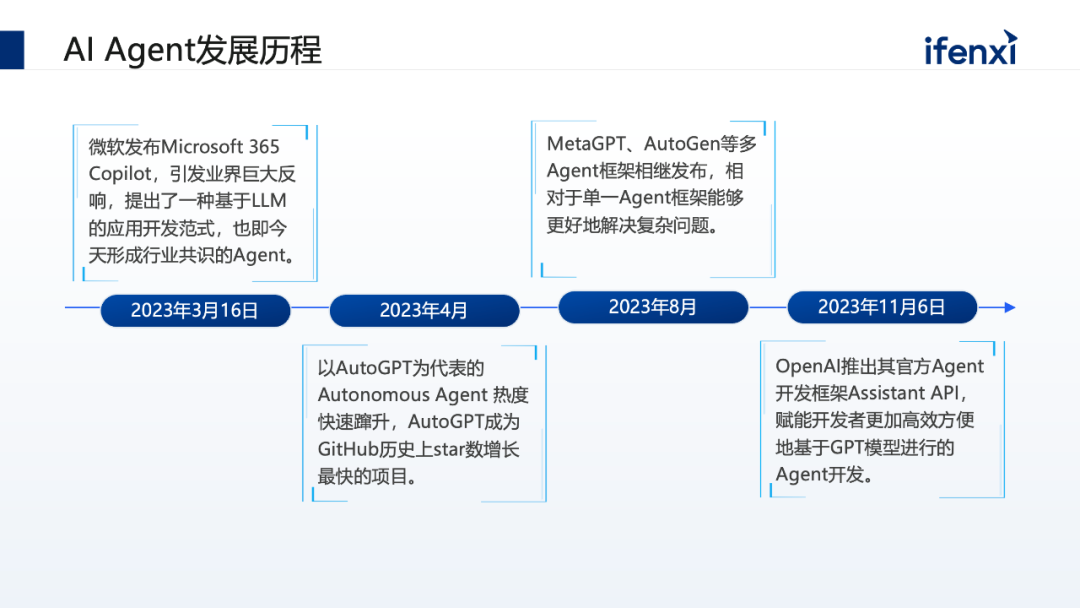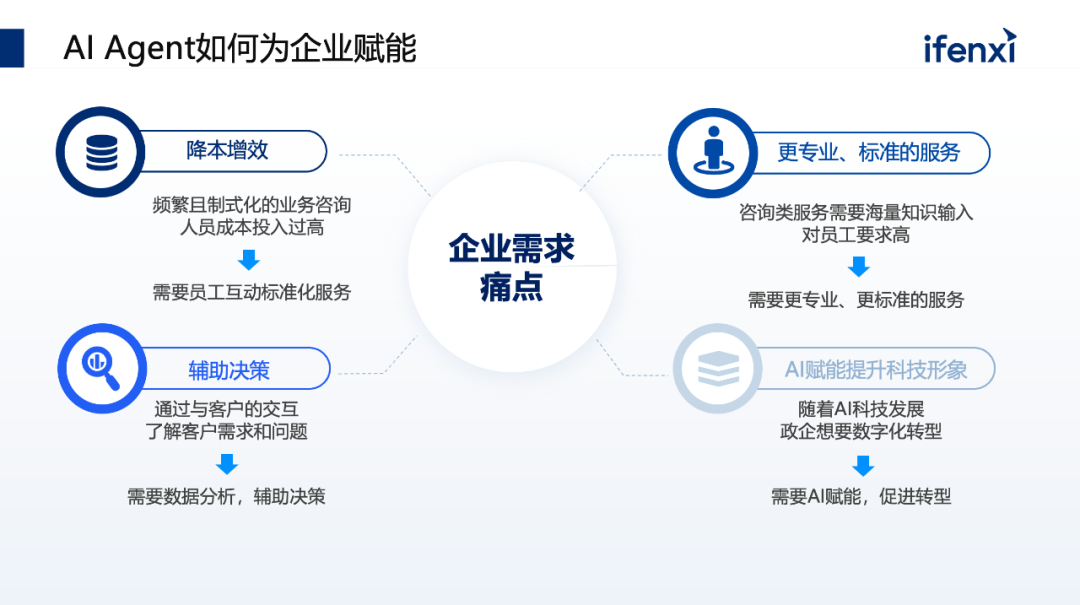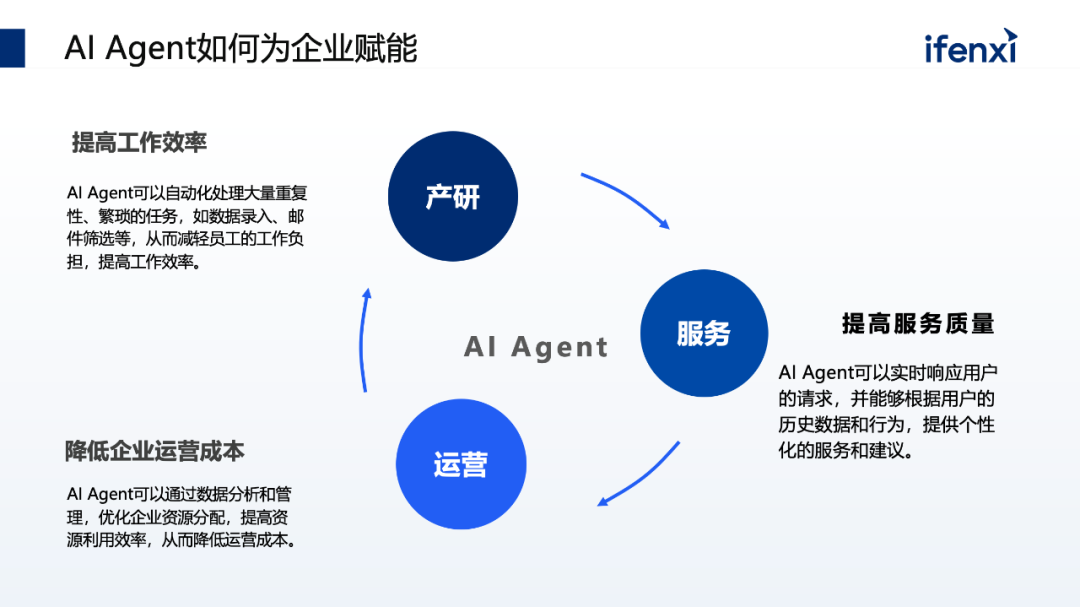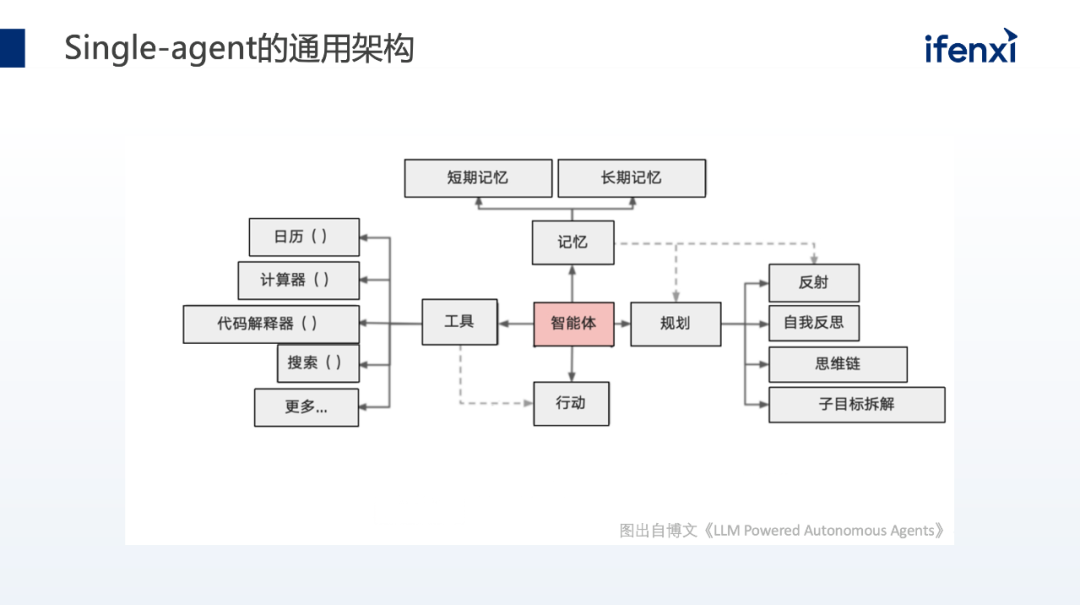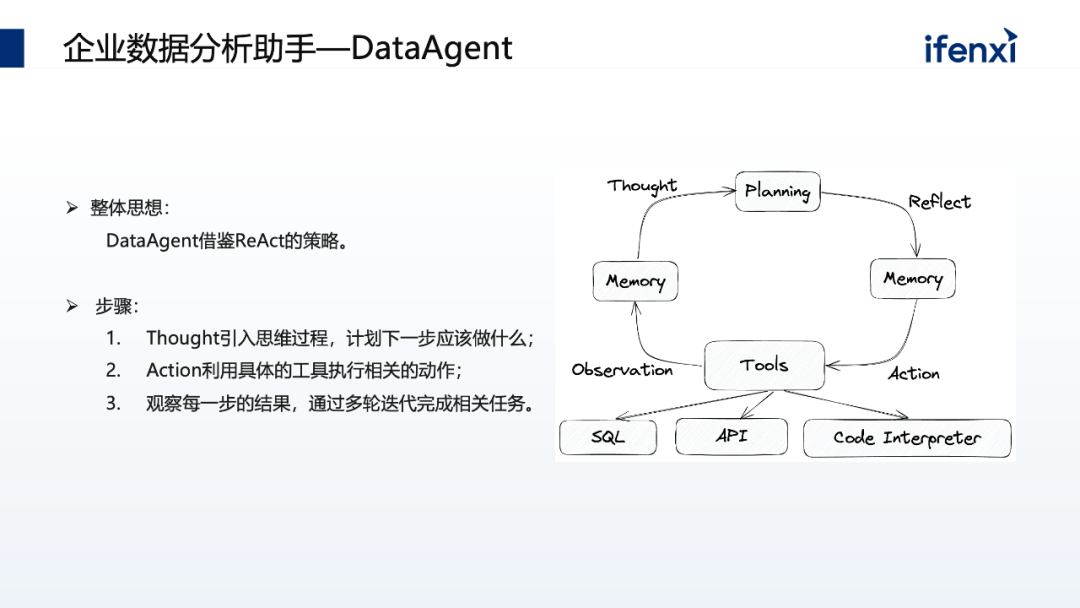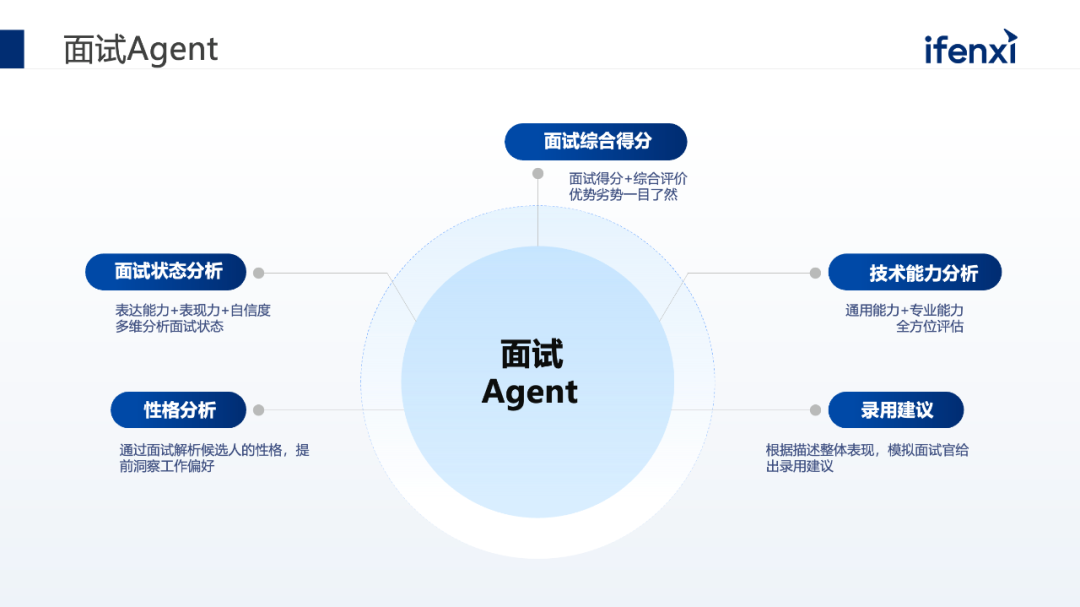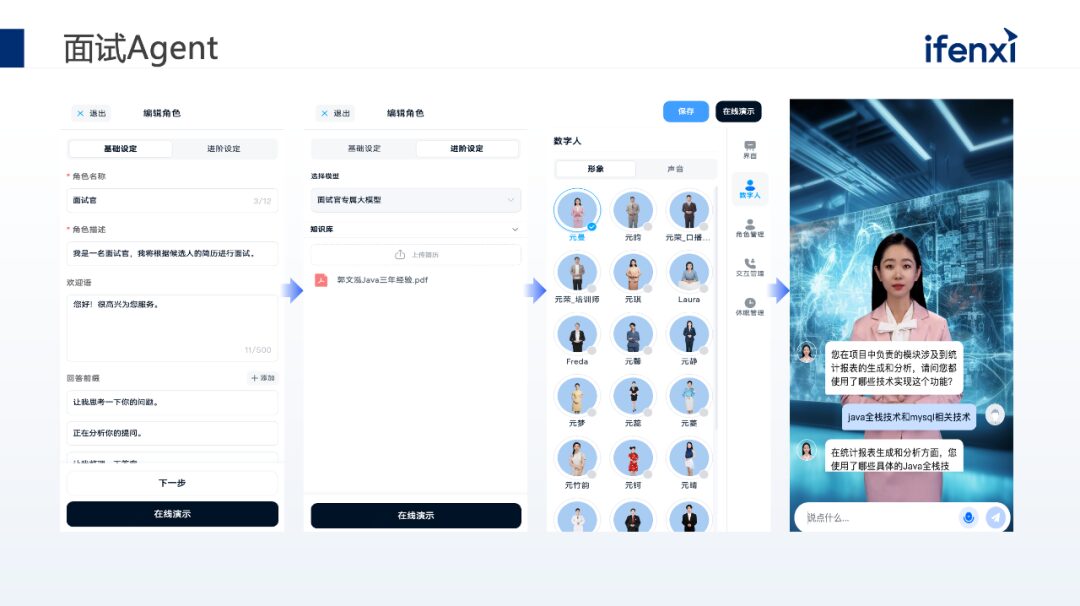In a market environment emphasizing low cost and high efficiency, utilizing AI Agents to assist enterprises in digital transformation, achieving business process automation and intelligent management decision-making has become a highly focused application scenario for large models. However, to truly implement intelligent AI Agents, many challenges still need to be addressed.
This sharing mainly revolves around the practical paths of AI Agents within enterprises and various scenario practice cases.
Speaker: Pengfei Sun, R&D Director at Outbound Inquiry
The content has been streamlined; for the complete video transcript and courseware from the expert, please scan the QR code to receive it.

This sharing will be divided into three parts. The first part mainly explains the basic concepts of AI Agents and discusses how AI Agents can provide comprehensive support and assistance to enterprises; the second part will detail the practical paths of AI Agents; the third part will focus on successful cases of AI Agent practices in different scenarios.
01
How AI Agents Empower Enterprises
1.1 Overview of AI Agents
First, let’s understand the full picture of Agents. An Agent is essentially a system powered by large language models that possesses self-awareness, self-planning, and memory capabilities, enabling it to independently complete various complex tasks. When users pose questions, we can have the Agent understand the problem on its own, select the appropriate tools for task processing, and then provide the corresponding results back to the user.
The development of Agents has been relatively short, only gaining attention in the industry as large models emerged. On March 16 of this year, Microsoft released 365 Copilot, sparking a strong response in the industry, and its proposed LLM-based application paradigm has now become a consensus in the industry. Since then, Agents have entered a rapid development period, with Autonomous Agents represented by AutoGPT rapidly gaining popularity. In August, many multi-Agent projects such as Mate, GPT, and AutoGen were released, which can solve complex problems more accurately compared to single Agents. On November 16 of this year, at OpenAI’s developer conference, the announcement of the Assistant API provided developers with a more efficient way to build Agents based on GPT, marking a new height in Agent development.
1.2 Current Pain Points in Enterprise Operations and Corresponding Plans
After understanding the development history of Agents, let’s see how Agents can support and assist enterprises. The main issues enterprises currently need to address include the following:
First, reducing labor costs, providing frequent and personalized consulting services. However, the cost of such service personnel is quite high, so we need to provide standardized and professionally specialized basic support for employees.
Second, enterprises need expert-level, standardized consulting services, for example, consulting services require a large amount of knowledge reserves, which naturally imposes higher professional requirements on employees. Therefore, we need a standardized and professional service model.
Third, auxiliary support for decision-making, understanding customer difficulties through interaction with clients, discovering customer needs, and assisting clients in solving related problems.
Fourth, empowering enterprises through AI, enhancing the overall technological level of the enterprise. As enterprises grow, they need to have AI empowerment and corresponding technological innovation capabilities.
In response to the above points, we need to see if we can find solutions and how to build corresponding application scenarios. From a global perspective of the enterprise, we divide the current situation into three parts.
First part, R&D. The emergence of Agents can improve overall work efficiency, handling a large number of repetitive and tedious tasks, such as data entry, email filtering, etc., reducing employees’ workload and thus improving integrated work efficiency;
Second part, service. Agents can respond to user needs in real-time, providing personalized services and suggestions based on user historical data and behaviors;
Third part, operations. Agents can optimize enterprise resource allocation and improve resource utilization efficiency through data analysis and management, thereby reducing operational costs.
After understanding the pain points and needs of enterprises, we summarize the execution strategy into two points: first, Agents must outperform ordinary employees; we believe that customers do not expect Agents to reach expert-level standards, but only to perform better than ordinary employees in most scenarios. Therefore, we define the objects replaced by Agents as not high-end experts or top talents, but ordinary employees with a monthly salary of about a few thousand yuan.
Secondly, Agents need to carry out multi-dimensional data analysis. In traditional BI and data analysis, enterprises often analyze based on structured data, but this method has a relatively single dimension and cannot meet current enterprise needs. Multi-dimensional data analysis has been successfully implemented in many enterprises, allowing them to derive valuable data from new data sources, which can then be converted into sales performance and profit points.
Practical Paths of AI Agents
2.1 AI Agent Architecture
After fully understanding the pain points of enterprises and the landing scenarios, let’s discuss the issues in the actual operation of Agents.
From the perspective of interaction and working modes, the overall architecture of Agents can roughly be divided into three categories: Single-Agent, Multi-Agent, and Agent-human. In this sharing, I will mainly introduce the first two categories, while the exploration of the third category is still in its early stages, with some experiences and results, but not sufficient for detailed sharing.
First, let’s look at Single-Agent. Currently, the mainstream general framework is relatively clear; it mainly centers around the Agent and possesses the following four capabilities.
First is memory capability, including short-term and long-term memory. Second is tool utilization capability, where the Agent fully utilizes all available external tools to achieve deep interaction with the external environment. Third is planning capability, which allows it to conduct self-reflection and sub-goal segmentation while also having a certain degree of self-feedback functionality. Finally, the Agent has its own action capability, able to execute specific actions based on pre-planned paths using specific tools, thereby completing the entire task.
2.2 Enterprise Data Analysis Assistant: DataAgent
A major scenario enterprises currently face is data analysis. Therefore, we have developed an enterprise-level data analysis assistant, DataAgent, which is built on a large language model to create a data analysis intelligent agent, redefining the way we interact with data. There is no need for lengthy development processes or cumbersome professional tools; just natural language conversation is enough.
From a global perspective, I have designed an architecture based on the overall strategy of ReAct. In this architecture, we can clearly see that we have inherited the four major modules of Single-Agent—planning, execution, action, and tool utilization. In the work scenario, data analysis is undoubtedly the core content. Therefore, we have built three main types of tools.
The first type of tool is SQL, as we all know that the most abundant and extensive part of data in enterprises is structured data, which exists in databases.
The second type of tool is API. Nowadays, some enterprises, in addition to structured data, have their own BI systems, which can provide relevant APIs, and even some unstructured data can be queried through search methods, all of which can be integrated into the tool layer as APIs.
The third type of tool is Code Interpreter, which mainly utilizes the principle of text to Python or text to code, converting specific natural language into code for corresponding execution to complete tasks.
In the overall thinking of DataAgent, we first introduce the thinking phase from the source in ReAct, preparing for the subsequent actions; next, we enter the actual operation phase, utilizing practical tools to complete tasks; subsequently, we will focus on the completion degree of each step, achieving the overall task goal through multiple iterations. In this framework, we can clearly connect the four key components together to form our data agent system.
Sharing Practical Cases of AI Agent Implementation
Next, we will share some practical implementation cases of AI Agents in specific scenarios.
3.1 Marketing Scenario Case
The first case comes from the marketing industry, where we customized an Agent tool for a well-known insurance company and law firm, aiming to solve some issues in specific scenarios. As we all know, both the insurance and law industries have a strong demand scenario for continuous training of newcomers. Even graduates from law-related majors lack practical experience and require long-term and in-depth training to meet industry requirements.
Upon discovering the pain points in these scenarios, we took relevant countermeasures and developed a digital marketing assistant, transforming it into an intelligent agent based on the concept of Agents, closely integrating it with business scenarios to assist enterprises in promoting the coordinated development of online and offline businesses. Overall, we divided the marketing assistant into three sections: pre-sales, sales, and post-sales.
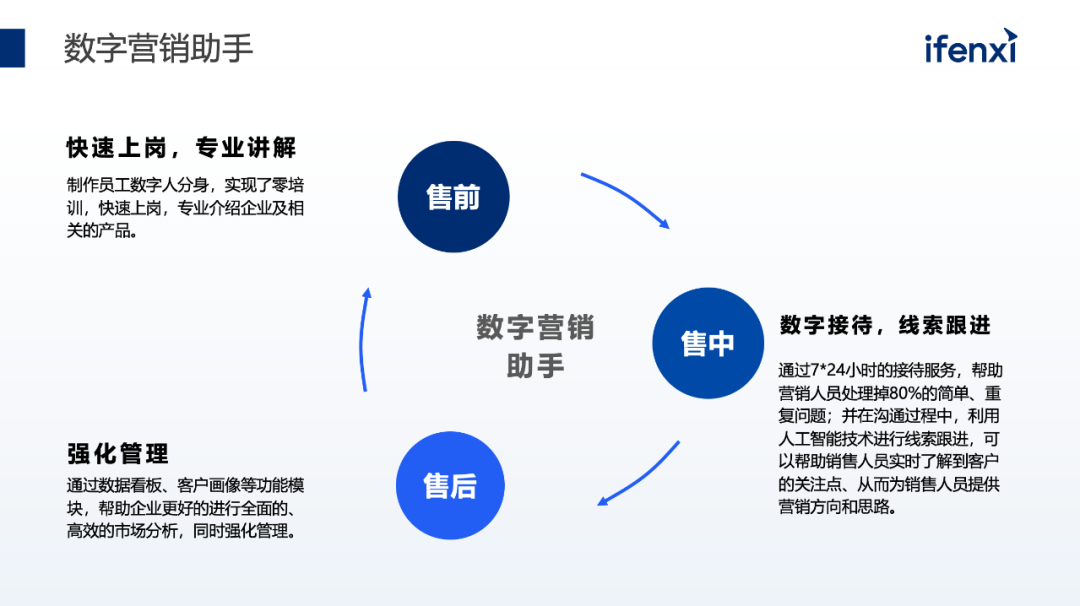
In the pre-sales stage, the marketing assistant can quickly start providing professional explanations, helping employees create digital avatars to achieve a zero-training rapid onboarding to introduce the company and related products.
In the sales stage, the marketing assistant can follow up on digital reception leads, providing uninterrupted service 24/7, and can assist employees in completing 80% of simple repetitive tasks. Furthermore, during the communication process, it can leverage AI technology for lead follow-up, enabling sales personnel to understand customer or user focus points in real-time and provide corresponding marketing strategies and ideas.
In the post-sales stage, the marketing assistant provides a series of enhanced management tools, assisting enterprises in comprehensively understanding the market through data dashboards, customer portraits, and other functional modules, and strengthening sales management, helping enterprises convert sales leads and channels into sales revenue.
3.2 Human Resource Recruitment Scenario Case
The second case is from a petrochemical enterprise’s human resource recruitment scenario. This enterprise is labor-intensive and needs to hire a large number of gas station workers and factory employees; however, recruitment costs are very high, and there is a lack of effective interview tools, resulting in extremely low recruitment efficiency and processes. More importantly, they do not have a comprehensive method to assess candidates’ abilities, relying more on subjective judgments of interviewers, which are easily influenced by first impressions. To solve the above problems, we also constructed an Agent based on the interview scenario.
The interview Agent mainly implements two core modules: first, before the interview, it will use the capabilities of large models to preliminarily screen candidates’ resumes and their corresponding job information to help enterprises select candidates that meet the requirements from numerous resumes.
Secondly, during the interview process, the Agent concept is used to assist interviewers in conducting interviews, analyzing candidates from five aspects.
First, interview status analysis, including candidates’ expression abilities, performance abilities, and confidence levels across multiple dimensions.
Second, personality analysis, as candidates’ statements or answers will inevitably reflect their personality traits.
Third, technical ability analysis, which is mainly divided into two modules: the first module is the evaluation of general abilities, where the Agent conducts in-depth analysis of candidates’ strengths and weaknesses and general skills. The second part is the evaluation of professionalism, targeting specific scenarios, such as allowing candidates to write code on-site and conducting comprehensive performance analysis based on code writing to evaluate candidates’ overall abilities.
Fourth, hiring recommendations, providing hiring suggestions based on candidates’ performances and simulated interview results.
Fifth, comprehensive scoring, summarizing all data to derive candidates’ scores, comprehensive evaluations, and assessments of strengths and weaknesses, making the interview evaluation process clearer.
The image above is an example of the interview process, where users can define whether the interviewer is for the first round, second round, or HR round. We have also specifically built a large model for the interview Agent, combined with the private knowledge base uploaded by candidates to quickly construct a private domain model, forming a complete interview brain mechanism.
In addition to the corresponding brain and role configuration, there are also corresponding visual displays. Since candidates only see cold text during the interview process without a good interactive experience, it would feel very poor. Therefore, the Agent provides many digital human images and voices to better serve candidates during interviews, effectively breaking the cold impression that machines usually give.
This concludes the sharing of the practical paths and various scenario practice cases of AI Agents within enterprises. If you need to obtain the complete video transcript and courseware from the expert, please scan the QR code to receive it.
⩓
Long press the QR code to receive the full video transcript and courseware

PHD in Computer Science from Nanjing University, expert in natural language processing and artificial intelligence. Currently leading the R&D work related to CoPilot and Agents at Outbound Inquiry, holding over 20 patents, and publishing several papers at top international conferences in artificial intelligence and natural language processing. Former algorithm head at Qihoo 360 and director at Suning.com.
Note: Click the lower left corner“Read the original text” to receive the complete video transcript and sharing courseware.




